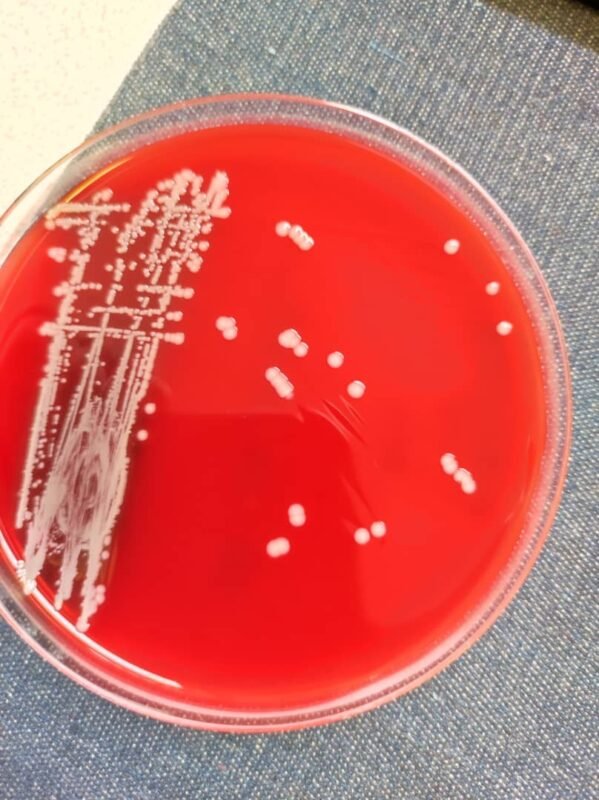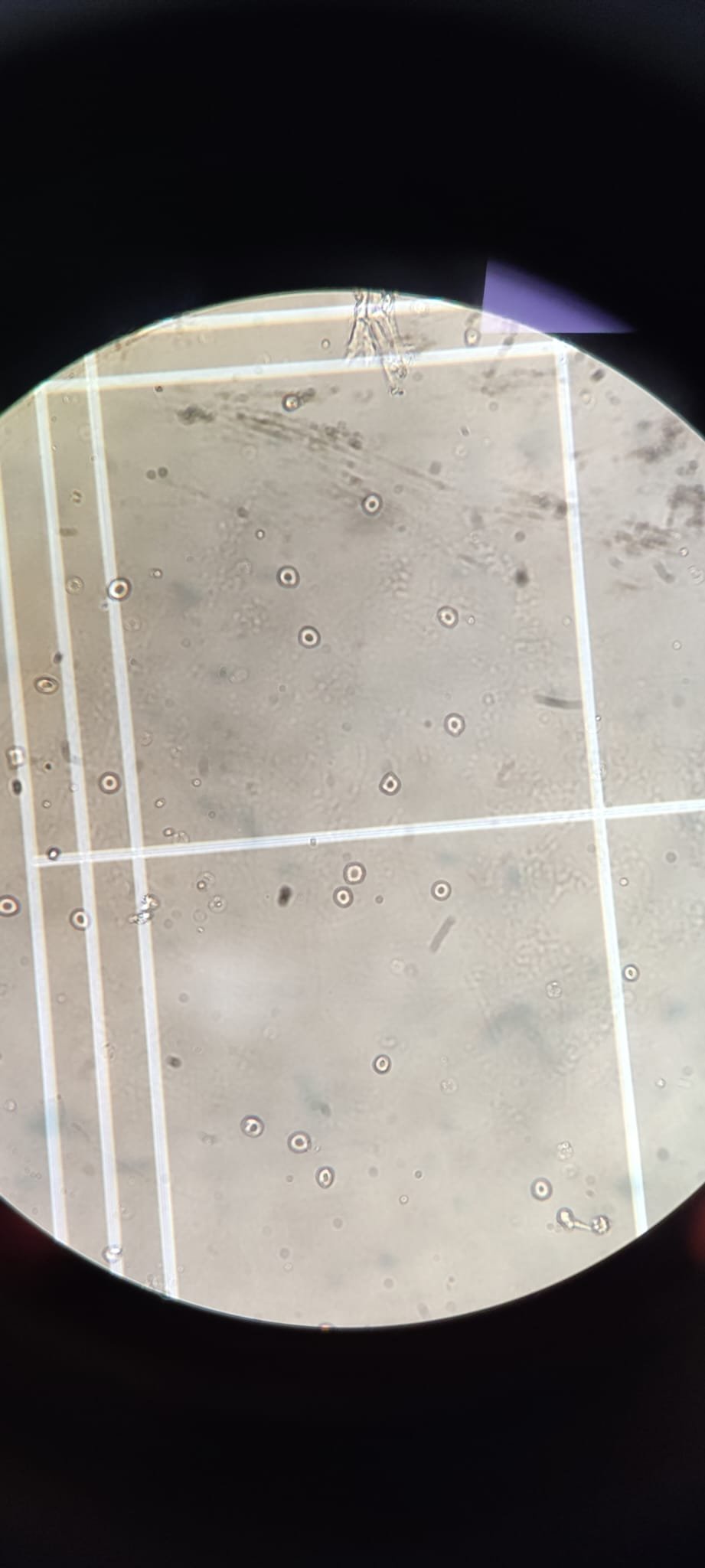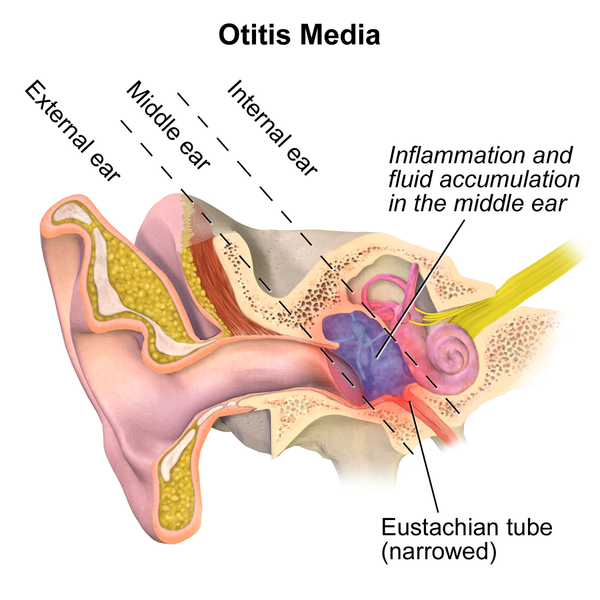Table of Contents
What is Otitis Media
Otitis media is an infection of the middle ear – you know the space behind the eardrum. It’s common, especially in children, and can be caused by bacteria, viruses, or, in rarer cases, fungi.
Otitis media happens when the Eustachian tube (which connects the middle ear to the back of the throat) becomes blocked, maybe because of infections, allergies, or sinus issues.
That’s why most patient with otitis media, started with cough or some form of cold symptom. And when it starts, you begin to experience ear pain, milky fluid discharge from the ear and sometimes fever.
Now most of these can resolve on its own or with antibiotics, but the problem arises when it becomes recurrent. That is when it becomes frustrating.
Often times, this frustration traces back to a simple, yet significant, misdiagnosis. In cases where Candida species are mistaken for Staphylococcus species, the consequences are usually prolonged discomfort, repeated rounds of ineffective antibiotics, and a challenging road to recovery.
The Misidentification of Candida spp. as Staphylococcus spp.
This misidentification is more than just a mistaken identity or technical error; it has real-world implications for the patient. We need to understand the similarities between Candida and Staphylococcus in terms of microscopy, culture, and biochemical characteristics, so that we can improve our identification practices and ensure that our patients receive the right treatment from the very first time.
Similarities: Candida spp. vs. Staphylococcus spp
The similarities between Candida and Staphylococcus species are subtle but enough to lead even seasoned practitioners astray.
Microscopy
Under the microscope, Candida spp. appear as large, budding yeast cells sometimes in a cluster with the potential for forming pseudohyphae, depending on the species and the sample. They are gram positive
Staphylococcus spp. although they are gram positive cocci in clusters, they appear much tinnier than yeast cells. However, in low magnification (x40 obj), one can mistake yeast cells as Staphylococcus spp. This resemblance may cause an initial assumption of bacterial rather than fungal infection, especially in cases where a lab scientist isn’t expecting to see yeast.
Culture Characteristics
Here is another one, when cultured on routine media both Candida spp. and Staphylococcus spp. form colonies that are morphologically alike. On blood agar for instance, Both Staphylococcus species and Candida colonies may display white to milky colonies. It ‘s worse in mixed cultures, since both organisms are facultative anaerobes, they can grow in similar environmental conditions, further adding to the potential confusion in a busy lab setting.

Biochemical Testing
Biochemical testing can even add to the mix, when the scientist is already determined its Staph. he’s dealing with. Do you know that Candida tests positive for Catalase test, which is a basic biochemistry test for identifying Staph. aureus.
Do you now see how easy it is to mistake Candida spp as Staphylococcus spp., so off handedly. And once the result is released the clinician gives this patient Antibiotics, which as funny as it sounds, help and improves the rapid growth and proliferation of yeast cells. Candida spp, thrives more in the presence of antibiotics, because then you have succeeded in removing “the competition”. And what do you think happens to our patients your or old? Your guess is as good as mine.
Here is another one, it looks like Candida spp, is a “master of disguise”
Candida spp. Resembling Red Blood Cells
Apart from the similarities to Staphylococcus spp., Candida spp. can also appear similar to red blood cells, particularly in wet preparations or suspension samples, such as urine. This likeness in morphology can further complicate identification, because yeast cells, when rounded, unstained and unbudded, can resemble erythrocytes (red blood cells) under x10 obj. As mild as that sounds, such similarities make it easy for laboratory personnel to overlook fungal cells, especially in “unassuming” samples where red blood cells are often present like the urine. Of which a simple urine dip strip can easily fix by showing if there is an actual presence of blood in the urine sample.

What’s the way forward, how do we make sure this mistake doesn’t happen under our watch? One phrase BEST PRACTICES!!
Best Practices for Accurate Identification of Candida in Otitis Media
To be able to avoid this pitfall of misidentification of candida , medical laboratories must adopt a robust approach to microbial testing at all times, every step of the way.
Microscopic Differentiation
In a situation where wet preparation of the sample cannot be applied, proper gram staining and microscopy must be adhered to. It is not enough to stain a slide; once you focus with x40, make sure your examine it with x100. Because in X40 it will simply look like gram positive cocci in clusters – Staph!!!, and maybe out of work load you don’t go on to actually view it with the oil immersion lens. Reinforcing these protocols while training laboratory staff and the dangers misidentification of microbes.
As simple microscopy can be it is a powerful diagnostic tool. The picture below is a patient who had otitis media and from ordinary wet preparation for microscopy, it was discovered the patient had Candida or yeast, which was typed down to candida albicans.

Utilization of Selective Media
Culturing with selective media, such as Sabouraud Dextrose Agar, Potato Dextrose Agar, which supports the growth of fungi while inhibiting many bacteria, can provide clear differentiation. Always include this as a routine culture media for all culture samples, because quite honestly no one knows what is in a sample till the result is out. There are other advanced biochemical tests for differentiating Candida spp. from Staphylocuss spp.
Emphasizing Continuous Training and Quality Assurance
Maintaining a practice of quality control through regular training ensures that lab personnel are updated on emerging practices and nuances in microbial identification. Regular quality assurance programs can also help identify recurring errors and refine diagnostic protocols.
Because the patient is at the center of Health care, the goal of the laboratory is to help pin down what is wrong with them by careful analysis and examination of a sample gotten from their body.
Misidentifying Candida spp. as Staphylococcus spp. in cases of otitis media is more than a diagnostic error; it’s a reminder of the importance of accuracy in patient care. By —utilizing good microscopy, selective media, and advanced testing methods—we can reduce these errors, ensuring that patients receive effective treatment without delay.
In the end, every step we take toward precision in the lab translates to better patient outcomes, reduced recurrences, and a greater trust in our healthcare system.

